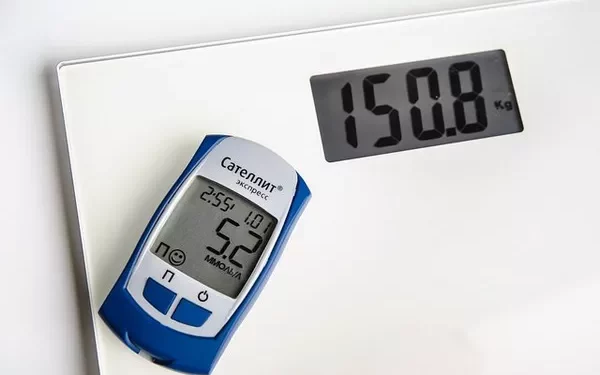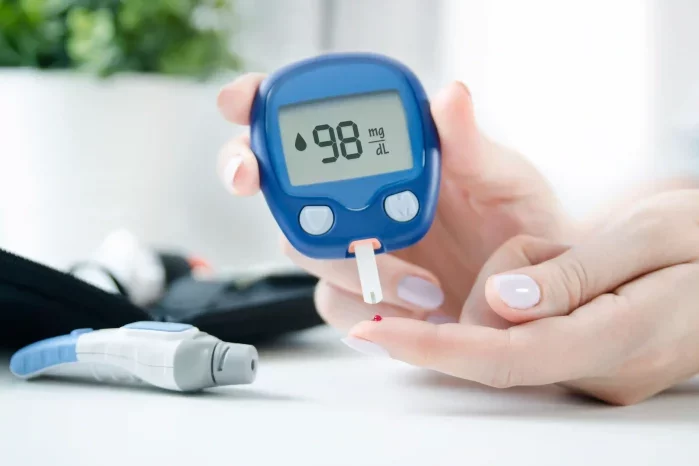The glucose tolerance test (GTT) is a diagnostic tool used by healthcare providers to assess how well an individual’s body processes glucose. It is commonly used to diagnose conditions like prediabetes, diabetes, and gestational diabetes. The test involves measuring the blood glucose levels at specific intervals after the ingestion of a glucose-rich solution. By analyzing the results, doctors can determine whether an individual’s body is handling glucose appropriately or if there are issues with insulin regulation.
The GTT is one of the most reliable methods for diagnosing abnormal glucose metabolism, and it plays a critical role in detecting individuals at risk of developing type 2 diabetes and other glucose-related disorders. This article explores what is considered normal in a glucose tolerance test, how it is performed, what the results mean, and how to interpret abnormal findings.
What Is a Glucose Tolerance Test?
The glucose tolerance test involves a series of blood draws that measure how efficiently the body handles a glucose load over a specific period. The test is typically done after an individual fasts overnight (usually 8 to 12 hours), and it requires the individual to drink a solution containing a standard dose of glucose.
The most common types of glucose tolerance tests are:
Oral Glucose Tolerance Test (OGTT): This test is primarily used to diagnose type 2 diabetes, prediabetes, and gestational diabetes. It involves the ingestion of 75 grams of glucose dissolved in water, followed by a series of blood draws at intervals to track glucose levels.
Gestational Glucose Tolerance Test (GTT): Specifically designed for pregnant women, this test screens for gestational diabetes. It involves drinking a glucose solution, with blood samples taken at intervals to monitor the body’s glucose regulation.
How Is the Glucose Tolerance Test Conducted?
The procedure for a standard glucose tolerance test is as follows:
Initial Blood Draw (Fasting Glucose): The patient fasts overnight for at least 8 hours, and a fasting blood glucose sample is drawn to establish a baseline. This measures the amount of glucose in the blood after an overnight fast.
Glucose Drink: The individual then consumes a solution containing 75 grams of glucose dissolved in water. The exact composition of the solution may vary, but it typically contains a high concentration of glucose to stimulate the pancreas to release insulin.
Subsequent Blood Draws: Blood samples are drawn at various intervals after the glucose solution is consumed, typically at 30 minutes, 1 hour, 2 hours, and sometimes even 3 hours, depending on the test protocol. These samples measure the rise and fall of blood glucose levels in response to the glucose load.
Final Assessment: The results are analyzed to assess the body’s ability to regulate blood glucose and the functioning of insulin.
What Is Considered Normal for the Glucose Tolerance Test?
The interpretation of the glucose tolerance test depends on the measurements of blood glucose taken at different times during the test. For a person to be considered normal, their blood glucose levels must fall within certain established ranges at each time point. The normal ranges for the GTT are based on established guidelines from medical organizations like the American Diabetes Association (ADA).
Here’s a breakdown of what is considered normal during a standard 2-hour OGTT, which is the most commonly used:
Fasting Blood Glucose:
Normal Range: A fasting blood glucose level less than 100 mg/dL (5.6 mmol/L) is considered normal.
Impaired Fasting Glucose (IFG): A fasting blood glucose level between 100 and 125 mg/dL (5.6 to 6.9 mmol/L) suggests impaired fasting glucose, a condition often associated with an increased risk of developing type 2 diabetes.
Diabetes Diagnosis: A fasting glucose level of 126 mg/dL (7.0 mmol/L) or higher on two separate occasions indicates diabetes.
1-Hour Blood Glucose:
Normal Range: A blood glucose level of less than 180 mg/dL (10.0 mmol/L) one hour after the glucose drink is considered normal.
Impaired Glucose Tolerance (IGT): A blood glucose level between 180 mg/dL (10.0 mmol/L) and 199 mg/dL (11.0 mmol/L) at the 1-hour mark suggests impaired glucose tolerance, which is a risk factor for diabetes.
Diabetes Diagnosis: If the 1-hour blood glucose level reaches or exceeds 200 mg/dL (11.1 mmol/L), this indicates a possible diagnosis of diabetes.
2-Hour Blood Glucose:
Normal Range: A blood glucose level less than 140 mg/dL (7.8 mmol/L) two hours after drinking the glucose solution is considered normal.
Impaired Glucose Tolerance (IGT): A blood glucose level between 140 mg/dL (7.8 mmol/L) and 199 mg/dL (11.0 mmol/L) after two hours indicates impaired glucose tolerance, which is a prediabetic condition.
Diabetes Diagnosis: A blood glucose level of 200 mg/dL (11.1 mmol/L) or higher after two hours is diagnostic of diabetes.
Additional Notes:
Gestational Diabetes (GDM): For pregnant women, different thresholds apply. According to the American Diabetes Association (ADA), a diagnosis of gestational diabetes can be made if:
- Fasting blood glucose is ≥ 92 mg/dL (5.1 mmol/L),
- 1-hour glucose is ≥ 180 mg/dL (10.0 mmol/L),
- 2-hour glucose is ≥ 153 mg/dL (8.5 mmol/L).
Why Are Glucose Tolerance Test Results Important?
The glucose tolerance test is a powerful diagnostic tool used to detect the body’s inability to regulate glucose effectively. The results of the test can help to:
Identify Early Signs of Diabetes: The GTT can diagnose prediabetes and diabetes in individuals who may not have exhibited symptoms yet. Recognizing and treating diabetes early can prevent or delay the onset of complications.
Assess Risk Factors: Individuals with abnormal GTT results, even if they are not diagnosed with diabetes, may be at a higher risk for developing the disease in the future. This information allows healthcare providers to implement preventive strategies, including lifestyle changes such as dietary modifications and exercise.
Monitor Treatment Efficacy: For individuals already diagnosed with diabetes, the GTT can be used to monitor how well treatment plans (including diet, exercise, and medications) are managing blood glucose levels.
How to Interpret Abnormal Results?
The interpretation of abnormal results depends on the specific findings at each time point during the test. Below is an overview of the potential interpretations based on different outcomes.
Impaired Fasting Glucose (IFG)
IFG is a condition in which the fasting blood glucose level is elevated but not high enough to meet the criteria for diabetes. Individuals with IFG are at an increased risk of developing type 2 diabetes and should consider lifestyle changes like increased physical activity, a healthy diet, and regular monitoring of blood glucose levels.
Impaired Glucose Tolerance (IGT)
IGT refers to a condition where blood glucose levels rise higher than normal after eating, but not high enough to be classified as diabetes. It is considered a prediabetic state and is a significant risk factor for the development of type 2 diabetes. People with IGT should be closely monitored and encouraged to adopt healthy habits, such as weight management, exercise, and dietary modifications, to prevent progression to diabetes.
Diabetes Diagnosis
If an individual’s blood glucose levels meet or exceed the thresholds for fasting glucose, 1-hour, or 2-hour post-glucose measurements, a diagnosis of diabetes is often made. For diabetes to be diagnosed, the same abnormal result must be confirmed on two separate occasions, as blood glucose levels can fluctuate due to a variety of factors (e.g., illness, stress, medications).
Factors That Can Affect GTT Results
There are several factors that can influence the results of a glucose tolerance test, including:
Medications: Certain medications, such as corticosteroids, diuretics, and beta-blockers, can interfere with glucose metabolism and affect the test results.
Stress: Physical or emotional stress can cause elevated blood glucose levels, which may skew the results.
Illness: Acute illnesses such as infections can temporarily raise blood glucose levels.
Pregnancy: Gestational hormones can cause insulin resistance, leading to temporary glucose intolerance during pregnancy.
Timing of the Test: The timing of food intake prior to the test and the individual’s sleep patterns can also influence glucose levels.
Managing Abnormal GTT Results
Individuals with abnormal GTT results should work closely with their healthcare providers to develop a management plan. The primary treatment goals focus on lifestyle modifications, such as:
Dietary Changes: A balanced, low-glycemic-index diet rich in whole grains, vegetables, and lean proteins can help stabilize blood glucose levels.
Physical Activity: Regular exercise, such as walking, swimming, or cycling, helps improve insulin sensitivity and supports weight management.
Weight Management: Maintaining a healthy weight through diet and exercise can help regulate blood glucose levels and reduce the risk of diabetes.
Medication: In some cases, medications such as metformin may be prescribed to help control blood glucose levels.
Conclusion
The glucose tolerance test is a vital tool for diagnosing and monitoring conditions like diabetes and prediabetes. By evaluating how well the body handles a glucose load, healthcare providers can assess insulin function and detect early signs of glucose intolerance. The results of a glucose tolerance test help guide treatment strategies and lifestyle interventions that can prevent or delay the onset of diabetes and its complications. It is essential to understand the normal ranges for the test and interpret the results accurately in order to implement the best management plan. Regular monitoring and proper management of blood glucose levels are key to maintaining long-term health and well-being.
Related topics:
Can Prediabetes Go Away Permanently?























